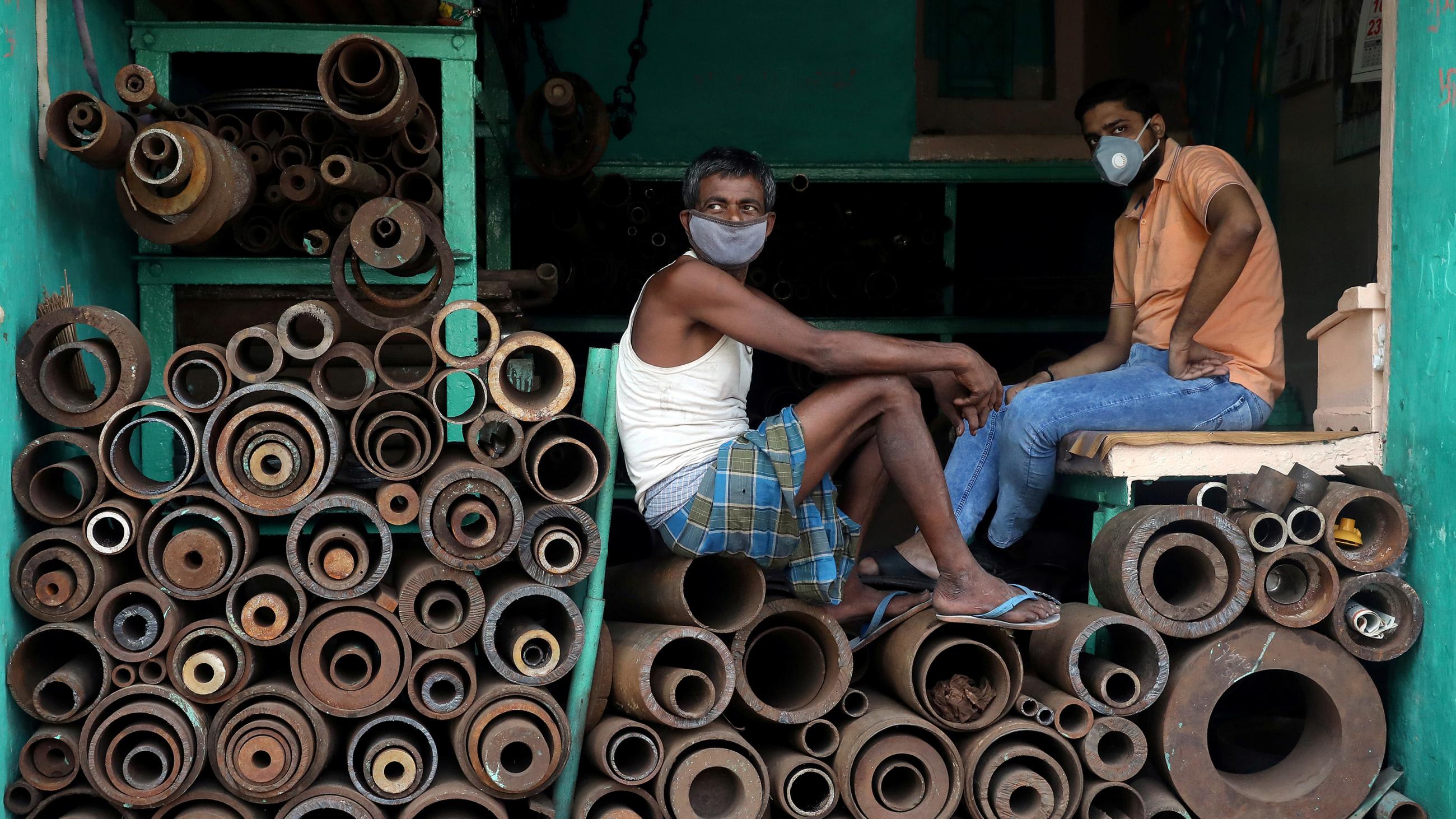A July 2, 2020 New York Times opinion piece by a member of the editorial board is titled 'Seriously, Just Wear Your Mask' with the subtitle "This is not complicated, folks." For many people and most professionals in public health this title captures a profound sense of frustration they feel at routinely witnessing people either not wearing masks in public at all, or keeping masks pulled down to cover their chin but not their nose and mouth. Other pieces quantify what could happen with better compliance such as a July 14, 2020 article on how mask wearing helped the Czech Republic.
To declare, "Just wear your mask" may be an appealing message, but it also preaches to the choir
The frustration stems from the mounting evidence that masks of any type can limit transmission by more than a third and therefore not wearing a mask is contributing to the epidemic. This behavior of not correctly wearing masks must be understood and addressed head on. For while the whole world is waiting for a vaccine that will solve the COVID-19 crisis, until such a time arrives, social distancing, hand washing and mask wearing are among the best tools that society has for limiting transmission. As such, it is important to understand the factors that limit correct and consistent mask wearing and to develop differentiated strategies to target different populations.

To declare, "Just wear your mask" may be an appealing message, but it also preaches to the choir. This is not the first-time global health has had to promote an unpopular prevention strategy, and it will not be the last. It is therefore critical to examine what we know about promoting public health interventions to reticent audiences.
Effective but Unpleasant: Understanding Non-Compliance
Wearing masks to limit COVID-19 is by no means the first hard-to-sell public health intervention. At the outset of the HIV/AIDS epidemic, scientists recognized that correct and consistent use of latex condoms was an extremely effective way to reduce transmission.
Assuming people would use condoms simply because they prevented HIV/AIDS was naive
Yet assuming that people would use condoms simply because condoms prevented HIV/AIDS transmission was naive. When surveys reported that many people didn't like condoms, the message from some in the media was to "stop whining." Like with the New York Times editorial, this message may have worked with a certain segment of the population, but proclaiming that anyone who doesn't like to use condoms is whining missed reaching important groups who would not change their behavior based on social shaming.

Bed nets are another example of an effective intervention that many have disliked. Use of bed nets can prevent malaria and dengue, but people often report that they make sleeping harder in hot climates by reducing air circulation. Finally, improved and ventilated cookstoves is yet another case where a significant adoption barrier exists. Improved cookstoves, which use chimneys and high temperature combustion, limit harmful indoor air pollution.
Many people don't like the way food tastes when cooked with them, however, and villagers may not link respiratory diseases that take years to develop to indoor smoke exposure. Early efforts to promote cookstoves based on the idea that these stoves would sell themselves due to their health and environmental superiority was hugely misguided.

In these cases and many more, to change behavior, public health professionals had to first ask and understand why people were not compliant and then to recognize that different audiences had unique reasons for their non-compliance.
It is worth understanding why people willingly choose to not comply with a behavior
Changing behavior necessitated grasping these reasons and subsequently developing a differentiated messaging strategy for the various groups. Significant research now exists on why people do or do not use condoms as well as the barriers for adopting improved cookstoves and clean cooking fuels. This understanding has lead to better and more effective campaigns to change those behaviors. Likewise, instead of simply saying people should wear masks, it is worth understanding why people willingly choose to not comply with a behavior known to limit COVID-19 transmission. Below are some of the reasons found in reports and the media.
Reasons People Give Why They Won't Wear Masks
Found in reports and in the media are lots of explanations—based both on the mask and on the disease
Market Segmentation and Harm Reduction
Whatever the reasons are for non-compliance with mask wearing, they will be different for particular audiences. A social marketing perspective tailors the message and solution to the audience, recognizing that the college students who don't wear masks while at a pool party are non-compliant for different reasons than the elderly man with emphysema who doesn't wear a mask while buying groceries. Similarly, assuming reasons are the same across countries and locales may miss important cultural nuances that play into the decision of whether to wear a mask. Targeted messaging and an understanding of non-compliant audiences and the messages that will change their behavior is therefore essential.
There is a disconnect between a person's intentions towards a particular behavior and their actions or practices
There are numerous theories of change that support such behavior change efforts for particular populations including the Theory of Planned Behavior, which helps explain the breakdown that often exists between intention and practice. These theories trace how a person's knowledge on a topic interacts with their attitudes thereby giving rise to behavioral intentions. Finally as anyone who has ever tried to implement a healthy behavior knows, there is a disconnect between a person's intentions towards a particular behavior and their actions or practices. Our own habits may impede the translation from intentions to practices or our external circumstances, including the attitudes and actions of other people. An important part of increasing condom use among commercial sex workers was providing them with the skills to advocate for condom use with clients who did not want to use them. Frameworks like the Theory of Planned Behavior guide targeted interventions by helping identify and avoid points of resistance.

Harm reduction is another a public health approach worth applying to mask wearing. Harm reduction approaches are based on more realistic assessments of how some populations will behave. For instance, a harm reduction perspective is that some teenagers will drink alcohol, and it is unrealistic to expect all groups of teenagers to completely abstain. Harm can therefore not be eliminated, but it can be limited. In this situation harm can be reduced by limiting the consequences of the behavior of drinking by focusing efforts on designated drivers.
A harm reduction perspective would likely accept that not all populations will fully comply with mask wearing
To take an example from India, surveys suggest that in the slums of Mumbai, an average of 190 people share a single toilet. In these contexts, inflexible social distancing policies that are identical as those used in high-income settings are not simply difficult to implement—they are impossible. A harm-reduction perspective adapts policies for these situations by first recognizing that stipulating an unattainable standard will be ineffective at best or contribute to further inequity if police are brought in to enforce an unreasonable policy. For masks meanwhile, a harm reduction perspective would likely accept that not all populations will fully comply with mask wearing. This is different from the typical sentiment offered by public health officials of lamenting why we can't be more like Singapore or other places with extremely high rates of mask use. Countries such as Singapore are indeed to be emulated, but it would be wishful thinking to discount some of the unique cultural, historical, economic and political characteristics that lead to nearly universal mask use there. Accepting that these patterns of behavior will not be easily changed in some places and with some populations, the question then becomes how to alter behaviors to limit transmission to the extent possible.

Freebies, Mandates, and Nudges
In the past, there was a perception by many in the global community that if people don't pay for goods, they don't value them. This was the logic behind charging for public health goods such as bed nets. Rigorous evaluations from groups such as J-PAL have largely overtuned such cherished (and false) beliefs, and the 2019 Nobel Prize for Economics recognized this work. Although none of these studies were on face masks, there is no reason to believe their conclusions would not apply to face masks.
Masks should therefore be free and readily available public goods for the poor and should appeal to the audiences that need them in terms of design, materials, and sizing.

Norms are constantly evolving around behaviors that support the public health. Seatbelt use is a classic example of an effective behavior that was first regarded as inconvenient by many. But norms around seatbelt use have changed in many parts of the world and using a seatbelt has become second nature for many groups of people. Similarly, the behavior change communication and behavioral economics literature is filled with examples of subtle "nudges" that function through small, often imperceptible cues that can have a significant impact on behavior.
Norms around seatbelt use have changed in many parts of the world and using a seatbelt has become second nature for many groups of people
The easiest way to increase compliance with facemasks is to mandate their use. Although this is an obvious part of the approach, it is not to say that more stringent policies are always more effective. Should wearing a mask be mandatory in all public places? Should the policy be the same whether it is an outdoor or indoor space given that some emerging research suggests transmission may be nearly twenty times more effective indoors? A national survey in Australia reported broad patterns of non-compliance with mandatory social distancing guidelines—for instance, with 57 percent of respondents reporting that they went shopping for non-essential goods when at the time that was against social distancing policy. The same survey found that as time went on, people were less likely to comply with mandates due to overall fatigue with the situation. It is similarly common in some countries to see people walking around with a face mask pulled down around their chin—a face mask that can quickly be pulled up if someone spots the police. This suggests that mandates are not in and of themselves the full solution. It also may mean that effective policy making should also follow a harm reduction approach. Such an approach focuses compliance and enforcement on the most critical situations to control transmission versus mandating mask wearing for all situations which may risk broad non-compliance with a policy deemed by many to be unreasonable.

Although the hope and expectation is that a vaccine will soon bring about an end to COVID-19, public health officials must prepare for the strong possibility that vaccine development will be delayed or that vaccines that are developed will be ineffective as the virus continues to mutate. In these scenarios, mask wearing remains an essential part of control efforts. Although it may feel cathartic to tell the populations of the world to "just wear your mask" it will not result in the required behavior changes.
Overcoming barriers to use have required global health professionals to take seriously the reasons for non-compliance
What's required is more rapid research to understand why people do not wear masks in a correct and consistent manner in public spaces. Global health promoters have faced—and in many instances have had to overcome—the challenge of promoting a solution regarded as inconvenient by the public. Overcoming barriers to use have required global health professionals to take seriously the reasons for non-compliance and, in many cases, step out of their own world views and assumptions. For these issues, careful mandates and behavior change efforts have had to proceed hand-in-hand—recognizing that there are limits in legislating compliance in non-authoritarian countries. With some groups it has also required adopting a harm reduction perspective—a perspective that accepts the adage to "not let the perfect be the enemy of good."

Fortunately, there is a robust toolbox that can be used including research methods to understand the problem, market segmentation and microtargeting for tailored messaging and strategy, harm reduction approaches, and behavioral nudges. These tools and frameworks must be rapidly applied to alter behavior. Global health professionals must once again answer the call to be both ambitious in their goals yet realistic in acknowledging and confronting the messiness of human beliefs, attitudes and behavior.












